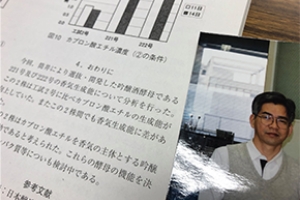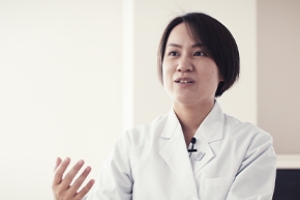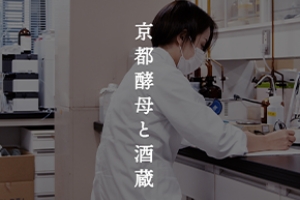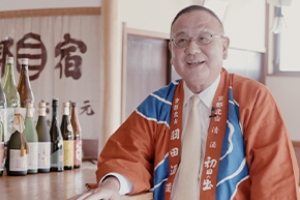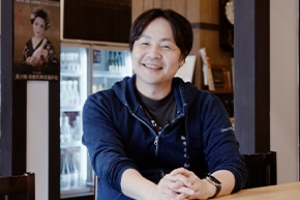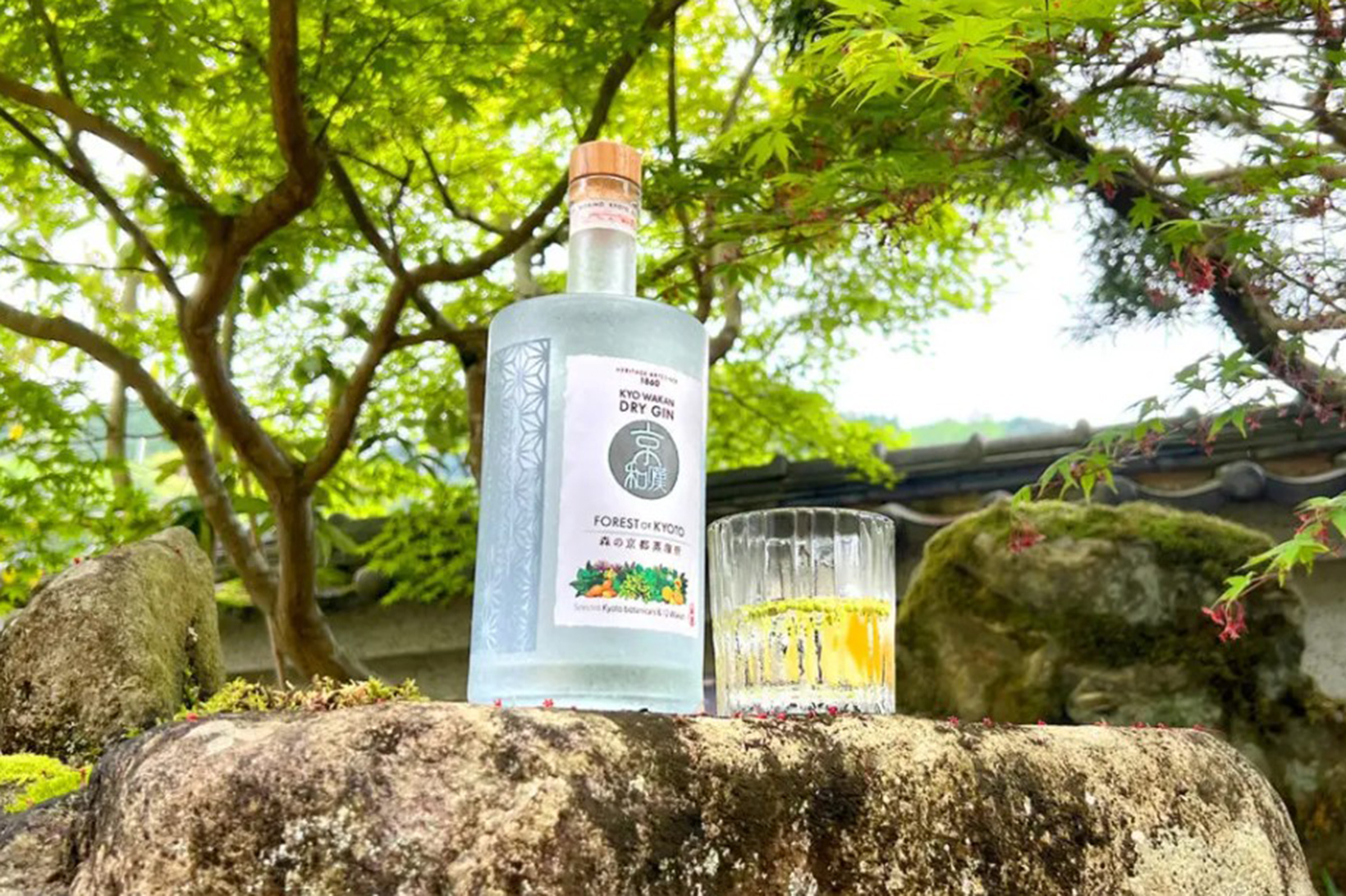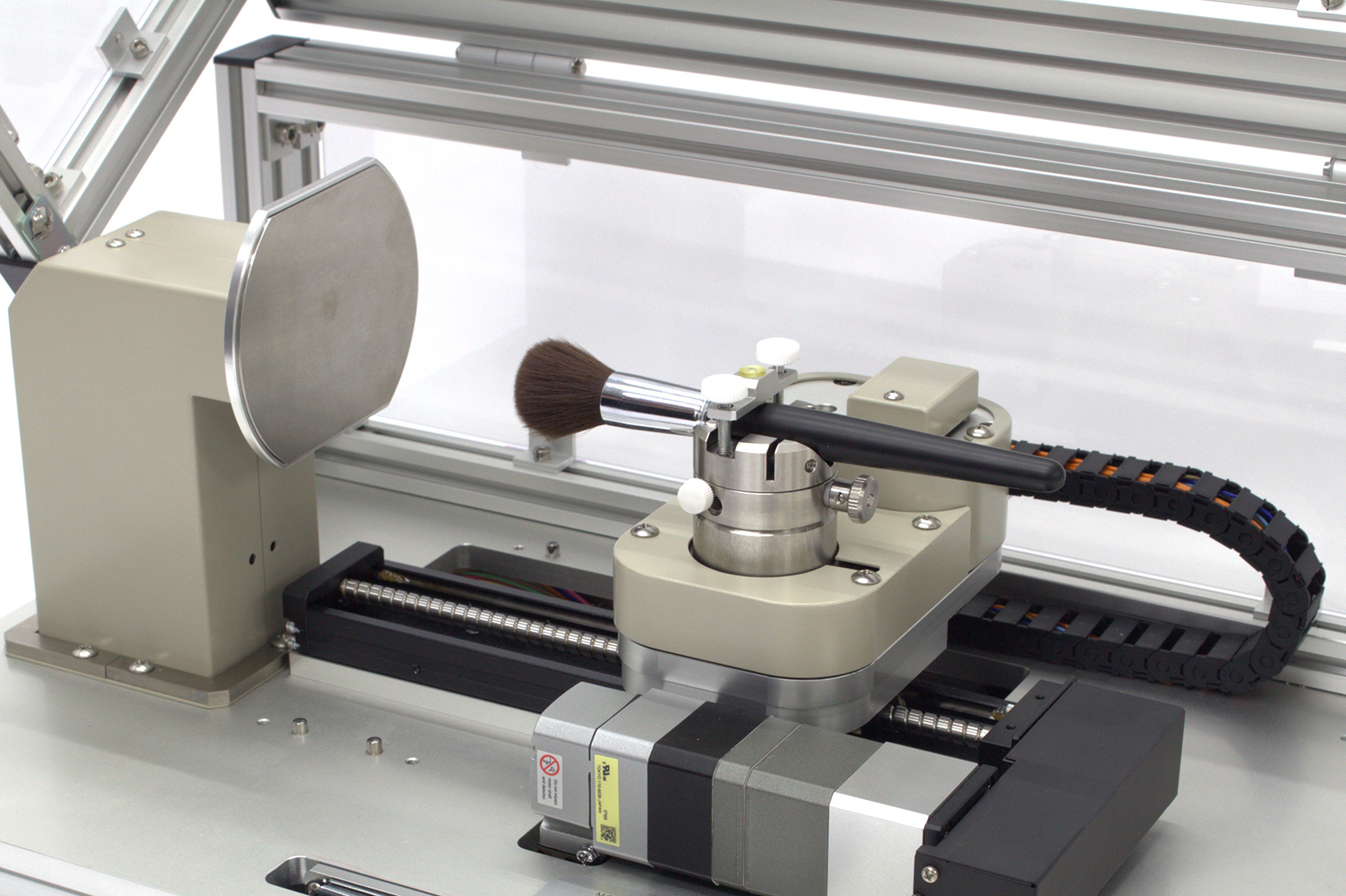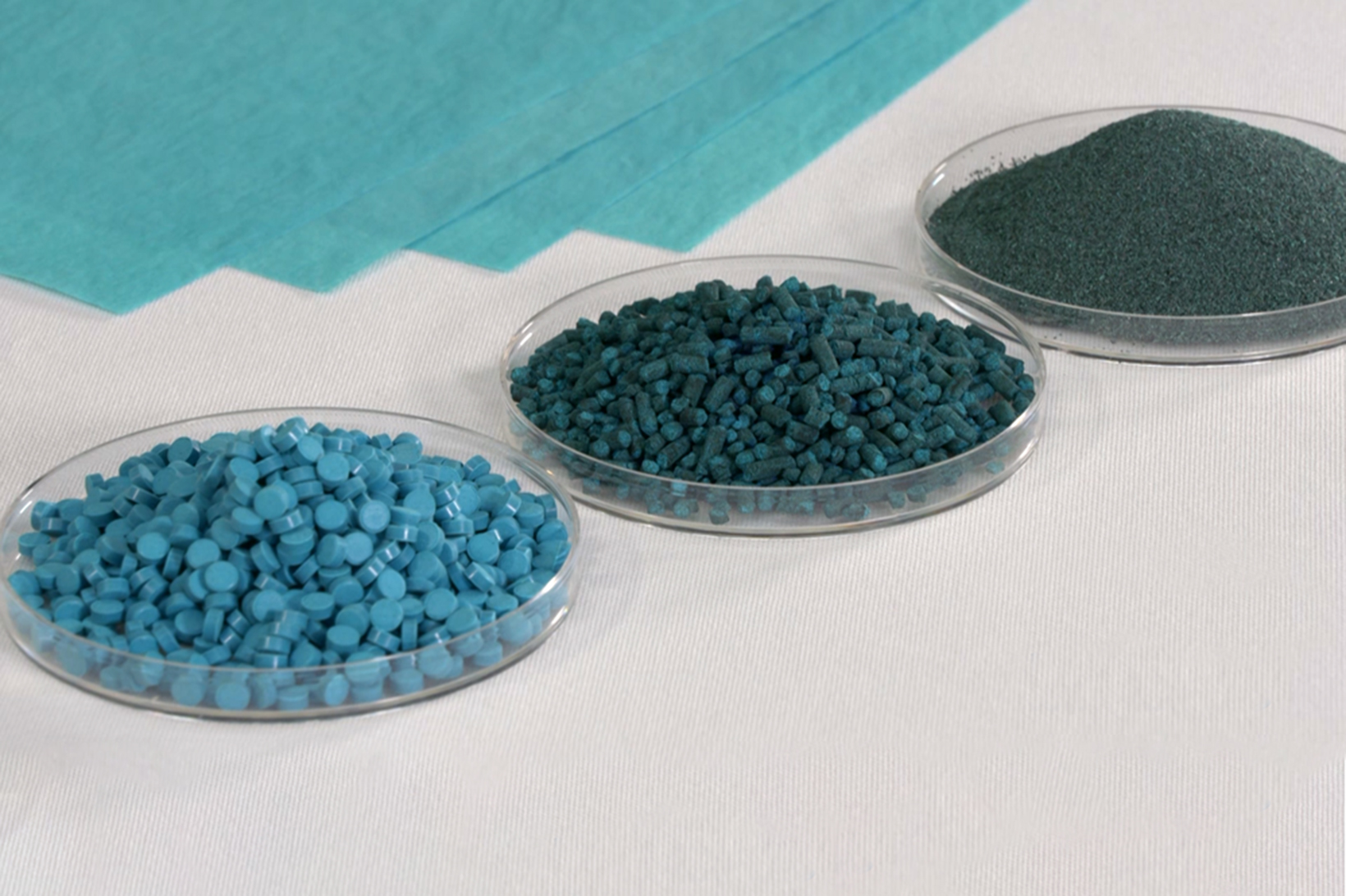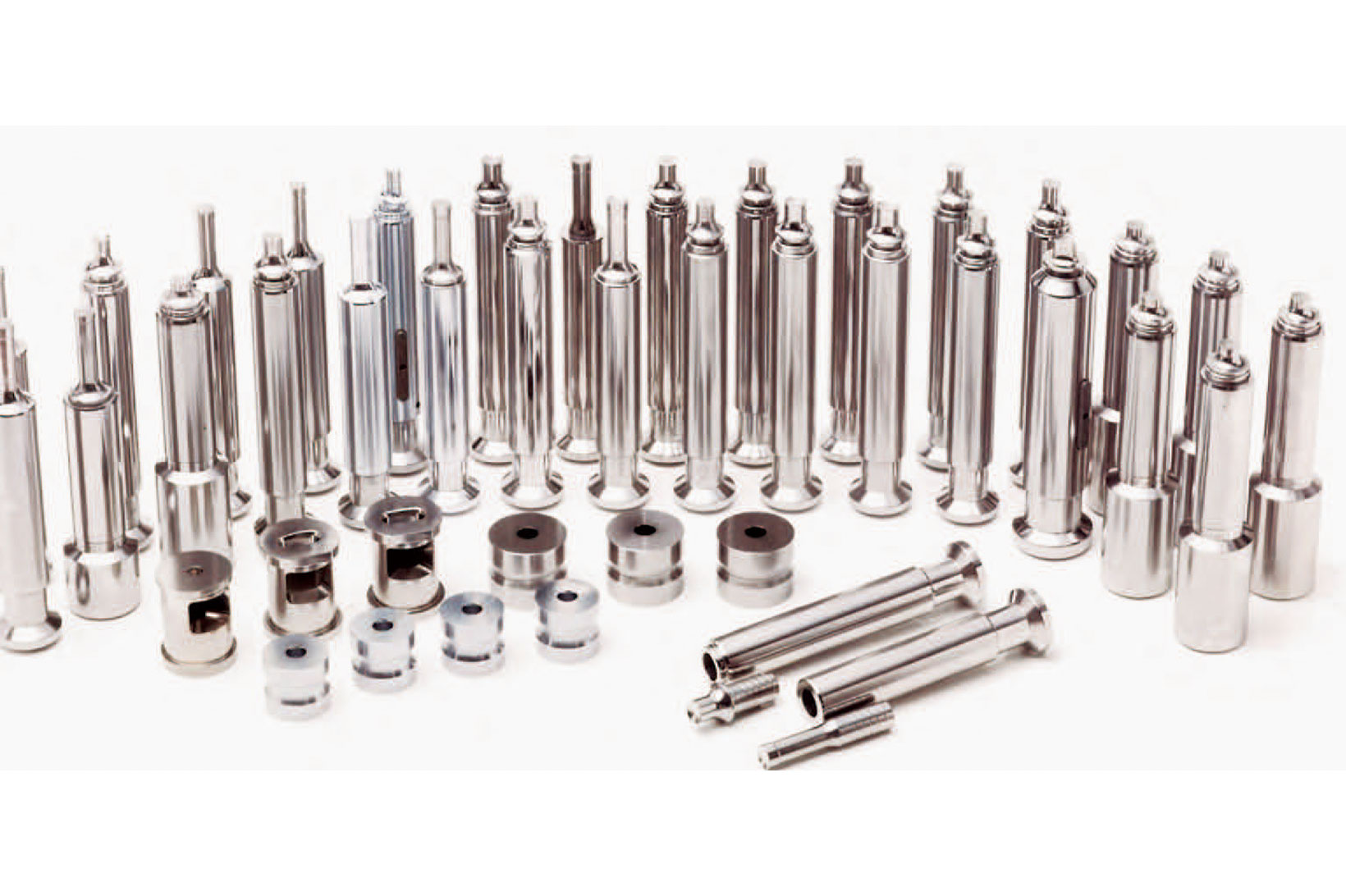Yamamoto Honke Brewery
Dignified Sake Refined by Famous Water
~The strongest tag team to produce all-Kyoto sake~
The town of Fushimi flourished as a hub port between Osaka and Kyoto after a wealthy merchant in Kyoto, Suminokura Ryoi, excavated Takase Canal in early Edo period (1603-1868). Since then, the name of the district was well known as a sake brewing district along with Nada in Hyogo Prefecture.
Founded in 1677, Yamamoto Honke Brewery has enjoyed a reputation of being a long-established brewery in Fushimi, along with its water source “Shiragikusui”, one of Fushimi’s seven famous fountains. Being extremely low in iron content and thus suitable for sake brewing, “Shiragikusui” is the proud source of the Yamamoto Honke Brewery’s representative brands “Shinsei (Sacred)” and “Matsu no Midori (Evergreen Pine Tree)”.
Since its establishment, sake produced by Yamamoto Honke Brewery has been characterized by its gentle and delicate flavor that harmonizes with Kyoto cuisine including meals served at traditional tea ceremonies. Genbei Yamamoto, the 11th generation owner says, “Our goal is to create a dining sake that goes hand in hand with the cuisine, especially in the context of Kyoto culture and tea ceremony.” The fact that the Yamamoto family has long been acquainted with the Omotesenke family (one of the three famous schools of Japanese tea ceremony) naturally leads to “Matsu no Midori” being the only sake recognized as an official sake for use at Omotesenke tea ceremonies.
Yamamoto Honke Brewery has been tirelessly innovating its technology to meet the needs of the times while preserving its traditions. Since 1989, the company has been brewing sake in a “two-fold” style, that is, using a large, modern mechanized brewing process and traditional handmade brewing. However, Yuichiro Nakata, the master brewer remarked clearly, “Traditional handmade brewing does not necessarily mean that the sake is good, and at the same time, modern mechanized brewing does not necessarily mean that the sake is bad. Even in large-scale mechanized brewing, it is human beings who operate the machines. The machine settings should be adjusted delicately according to the temperature and humidity of the day and the condition of the sake rice.” Nakata describes the hardships involved, “We need be mindful for what’s happening next. Even with large mechanical brewing machines, we pay close attention, using all our five senses.”
Along with this, Nakata stresses that the most important thing in sake brewing is teamwork. “Without smiling faces in the company, we can never make good sake. We strive to create an environment in which all employees can talk casually and exchange opinions freely without age barriers.” Good sake comes from the smiles of the brewers.
Mr. Yamamoto has long been involved with KMIITC, serving as chairman of the Sake Brewing Industry Research Committee, for which KMIITC serves as secretariat. In 2016, a project was launched to produce a local sake using “Iwai (celebration)” rice grown on in Misu, Fushimi Ward. “Iwai” is a sake specific rice developed originally in Kyoto Prefecture for sake brewing. The Yamamoto Honke Brewery proposed, “Then let’s use Kyoto-produced yeast originally developed by KMIITC.” Brewing “all-Kyoto sake” using the newly separated KMIITC yeast called “Kyo-no-Saku”, along with the local rice, water, koji, by the local Fushimi brewer, marked the beginning of the teamwork between “Kyoto Yeast” and Yamamoto Honke Brewery.
Junmai Ginjo Shinsei Iwai using “Kyo-no-Saku” is suitable for sakes served chilled and gained a wonderful reputation as a sake with a more fruity and pleasantly acidic than ever before. Since then, the teamwork between KMIITC and Yamamoto Honke Brewery has continued. Nakata smiles, “We work hard to produce good sake through friendly competition and trial and error.” The trust in KMIITC is so strong that as Nakata states, “we have built such a relationship with KMIITC so that when we have any questions about brewing, we can easily look for their sound advice.”

Yamamoto encourages KMIITC to keep up with their work, increasing the value and recognition of Kyoto yeast. He says, “Kyoto yeast is not a complete product, and we can aim for even better sake through the accumulation of techniques.” Nakata nodded strongly in agreement with Yamamoto’s encouragement. “Kyoto yeast is still evolving, and I think it will continue to do so for many years to come. We as a brewery currently use two types of KMIITC yeasts, Kyo-no-Saku and Kyo-no-Koi, and this year we will start using Kyo-no-Koto. I sense the possibility of creating sake with a variety of characteristics. Eventually, I would like to get together with brewing engineers from other breweries that use Kyoto yeast. Tasting sake made with Kyoto yeast from each brewery, and discussing the results together is desirable,” he dreamed out loud. Kyoto Yeast from KMIITC and Yamamoto Honke Brewery will surely continue to work together in creating even better sake in the future.



